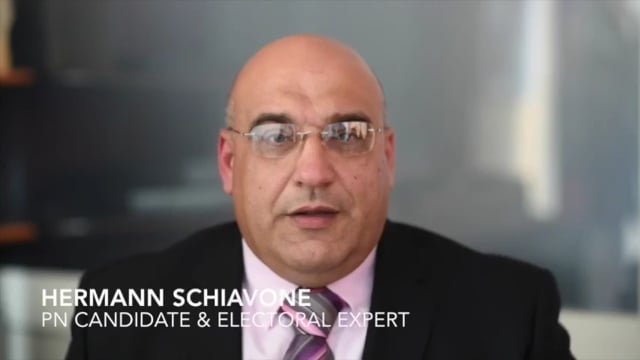[WATCH] Electoral experts debate court decision
2007 electoral amendment ‘closest way to interpret representation between first count votes and parliamentary seats’


It took political parties three years and lengthy discussions to finally agree to an amendment that comes the closest to interpreting the results of a general election and its representation in parliament.
Perhaps not so much between the two major political parties, talks for the need of an electoral reform rekindled last week when the First Hall of the civil court in its constitutional jurisdiction declared that the Nationalist Party should be granted two additional seats to hold 32 seats in parliament, while Labour retains its 39 seats.
Opposition leader Simon Busuttil immediately called on the Electoral Commission to respect the court’s decision while Prime Minister Joseph Muscat said the government will appeal the judgement.
Although the court’s decision does not change the 36,000-vote difference between Labour and PN, PN candidate and electoral expert Hermann Schiavone said that the court’s decision should be respected.
“A fair representation of the result translates into a seven-seat majority and not nine. Applying the judgement would respect the electorate’s vote,” he said.
The court, presided by Judge Jacqueline Padovani Grima, heard how a batch of 50 first preference votes belonging to then PN candidate Claudette Buttigieg were mistakenly placed in the pigeonhole of PN candidate Michael Asciak, also a contender on the eighth district.
Electoral Commissioner Vanni Ganado told the court that the mistake most probably occurred in the first count. Given that the vote difference between Labour candidate Edward Scicluna and Buttigieg on the first count was of just eight votes, Ganado said the eighth district should have elected Buttigieg, and not Scicluna.
According to the court, this also meant that Labour should have elected a total of 38 seats while the PN should have elected 27, as opposed to the 39 seats and 26 seats respectively.
Electoral law allows a recount when a specific count is still open. A count cannot be reopened if the following count is already underway. In this case, the batch of first preference votes was only found when the counting assistants started sorting Asciak’s voting ballots. A protest was lodged.
Labour’s head of electoral office Louis Gatt explained that political parties elect representatives to oversee the vote counting process in the counting hall. Every party would have its counting assistants [who sort the votes], the counting supervisors [those who oversee the sorting and counting of votes] and the counting hall agents [the ones who stand behind the Perspex overseeing everything].
“The aim of such a representation is to ensure a political party’s right to watch over the whole process. During this process, every candidate has the right to request a recount. If no objections are raised, the commission moves on to the next count,” he said.
Asked whether the mistake was the result of an oversight by the party’s representatives, Gatt said that party representatives included delegates and sub-delegates “who had all the right to request a recount”.
Padovani Grima used a mathematical formula, listed in the statute book, to determine the seat representation, based on the principle of proportionality.
The judgement reduces the seat majority by two; the redress as determined by the court adds two seats. If the judgement were to be implemented, the court would have increased the total number of seats in parliament from 69 to 71.
Gatt explained that the current electoral law was amended in 2007 to better interpret the result of first count votes and seats in parliament.
“As a result of this amendment, once the results are published and the parties see how many candidates were elected, a mathematical formula kicks in to adjust the number of seats the party with the lower number of elected candidates should hold. The numbers must obviously be odd as parliament can’t operate on an even number,” Gatt said.
He admits that one can never be precise but the system adopted so far is the one that mostly guarantees a fair representation of number one votes obtained and seats in parliament.
Gatt added that the votes difference between Labour and PN during the 2008 election was of just 1,500 votes. “The two sides obviously can’t hold the same number of seats and the PN had a one-seat majority even though the 1,500 votes in reality reflect ‘half-a-seat’. This is the system that we have and there are regulations that must be followed.”
“The results of past elections don’t make a difference. There is one, clear formula which applies depending on the majority achieved,” Schiavone added.
Schiavone agreed that despite the “improvements” over the years, there still remained loopholes. “We always discover something new … even in this case, where there’s only one runner-up to fill in one of the seats. We have yet to see who the second candidate will be.”


.jpeg)



.jpg)










.png)





